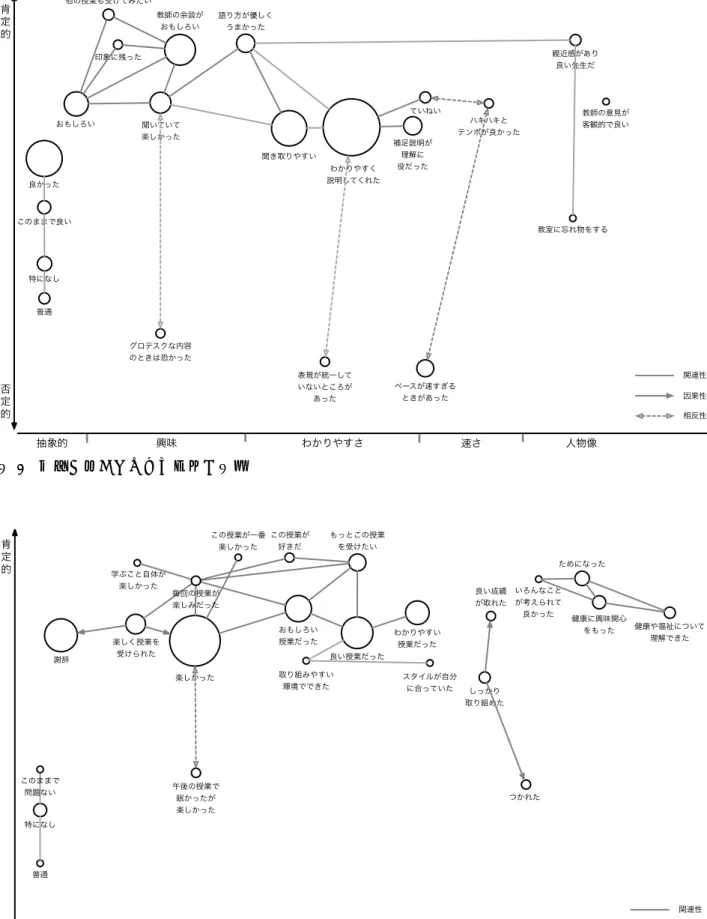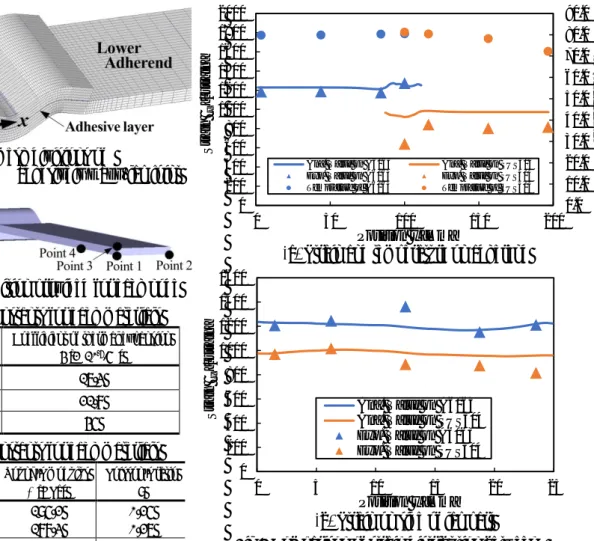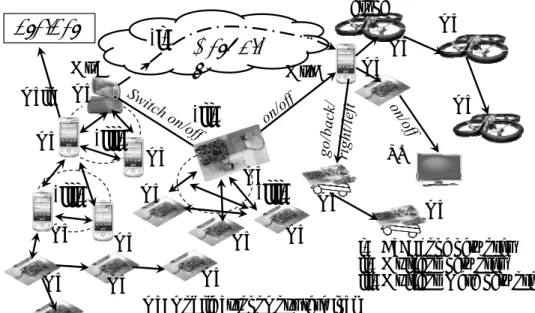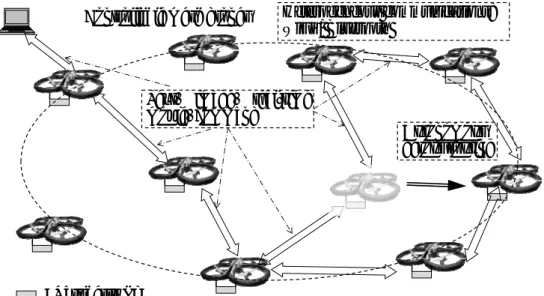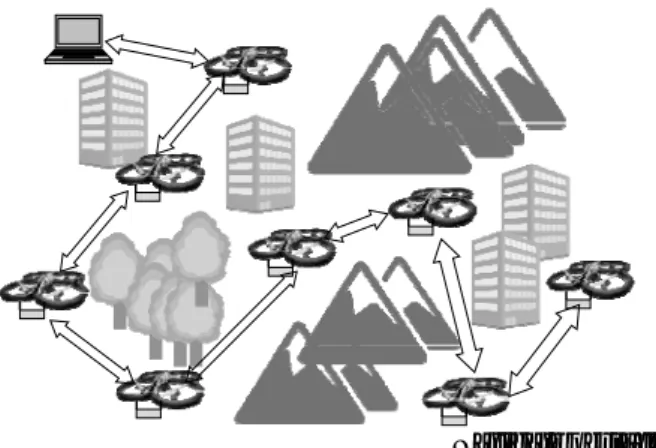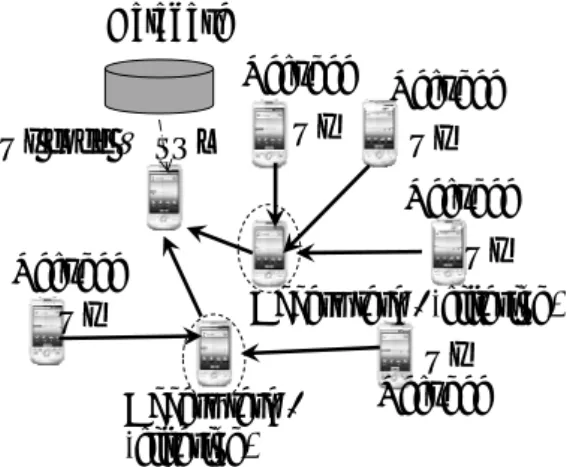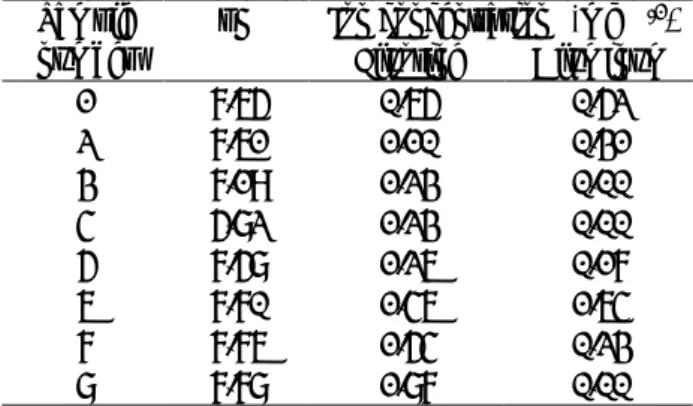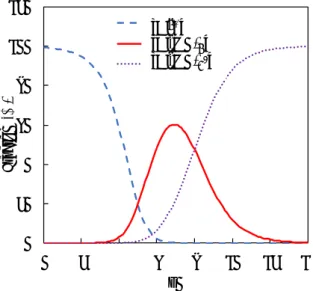ISSN 2189-5309
Research Reports of
National Institute of Technology, Tokyo College No. 50 , Mar. 2019
東京工業高等専門学校
研 究 報 告 書
第 50 号
2019.3
東京工業高等専門学校研究報告書 第 50 号
目 次
“From Man to Notman”
-Robinson Jeffers’s Inhumanist Philosophy- Hitoshi YOKOMIZO 1
(13)上の Eisenstein 級数 南出 大樹,越高 陸 8
GISを用いた古代スリランカの水利施設築造の地理的条件の解明 鈴木 慎也 18
車軸と車輪の間の動摩擦係数(減速係数)の測定4
-レーザー光を用いた光変調フォトIC を用いて- 藤井 俊介 23
自然数の分割とその応用について 安富 義泰,丸山 文綱 28
小グループをベースとした座学の取り組みに対する授業アンケートの自由記述分析による評価
黒田 一寿 32 熱負荷を受ける波型重ね合わせ接着継手の力学特性 志村 穣,渡部遥平,黒﨑 茂 41
酸化物半導体 SnO2ガスセンサの作製と評価 伊藤 浩 46
田中 晶、澁田 叡知、中新井田 覚志、河野 雅、川向 凜 51 杉本 新、橘 直輝、東宇 辰朗、真下 稔央、橋爪 嘉輔
流動層焼却灰中のフッ素の溶出量の簡便迅速な測定方法の開発
庄司 良, 廣田 季璃, 深浦 仁美, 高木 泰憲, 若杉 玲子, 甲野 裕之 58
桃
太郞絵巻から見えるもう一つの桃太郞像(下) 舩戸 美智子 62リアルタイムビッグデータのためのモーバイルVPN マルチホップネットワークの 一検討
Research Reports of National Institute of Technology, Tokyo College No.50 CONTENTS
“From Man to Notman”
-Robinson Jeffers’s Inhumanist Philosophy- Hitoshi YOKOMIZO 1
Eisenstein Series for (13) Hiroki MINAMIDE, Riku KOSHITAKA 8
Clarifying the geographical condition of irrigation system of ancient Sri Lanka Using GIS Shinya SUZUKI 18
Measurement of Deceleration Coefficient in a Simple Experimental System with One Wheel and One Axis part 4
-rotation and direction detection system with laser and photo IC for encoder- ShunsukeFUJII 23
On a partition of Natural Numbers and its Application Yoshiyasu YASUTOMI, Fumitsuna MARUYAMA 28
Students' Evaluation by Free Writing Questionnaire for the Class
Kazutoshi KURODA 32 Based on Small Groups
Mechanical Properties of Adhesively Bonded Wavy-lap Joints
Subjected to Heat Loadings Jyo SHIMURA, Yohei WATANABE, Shigeru KUROSAKI 41
Fabrication and evaluation of oxide semiconductor SnO2 gas sensor Hiroshi ITO 46
A study on mobile VPN multihop networks for real-time big data
Akira TANAKA, Akitomo SHIBUTA, Satoshi NAKANIIDA, Masaki KAWANO, 51 Rin KAWAMUKAI, Arata SUGIMOTO, Naoki TACHIBANA, Tatsuro TOU,
Toshichika MASHIMO,Yoshisuke HASHIZUME Simple and rapid measurement method of fluorine elution
Ryo SHOJI, Kiri HIROTA, Hitomi FUKAURA, Yasunori TAKAKI, 58 Reiko WAKASUGI, Hiroyuki KONO
On the Image of Momotaro in Momotaro Emaki Michiko FUNATO 62
Research Reports of National Institute of Technology, Tokyo College, No.50, 2018
*Department of Liberal Arts
“From Man to Notman”
―Robinson Jeffers’s Inhumanist Philosophy-
Hitoshi YOKOMIZO*
This essay gives a brief introduction to American poet Robinson Jeffers’s inhumanist philosophy and poetics.
Compared with other American poets of his generation, Jeffers has been undeservingly underestimated in the past few decades despite of his great contribution to the American poetry and his great insight into the natural environment in which all beings, human or non-human, exist. Grounded upon his inhumanist philosophy, Jeffers’s environmentally-conscious poems have potential to relativize our simple dichotomies: subject/object, humans/animals and so forth. In a poem titled “Animals,” Jeffers expands the definition of “animal” and questions our anthropocentric manner of seeing things.
(Keywords: Robinson Jeffers, inhumanist philosophy, American poetry)
1. Introduction
In a 1912 letter to his future wife, Una Call Kuster, Robinson Jeffers refers to Ralph Waldo Emerson in an ambivalent tone: “As you remarked... Emerson’s a great and good man... But I think that Emerson treats experience in too ‘pessimistic’ a manner” (Selected Letters 121). While showing some respect for the great precursor, Jeffers here appears to be somewhat critical of Emerson’s “pessimistic” philosophy. Jeffers’s equivocal attitude toward Emerson is presumably attributed to the fact that whereas Jeffers shares certain kinds of views of nature with Emerson, he distrusts Emerson’s privileging of human beings over nature/non- human beings.1 This paper, at first, focuses on the philosophies of Emerson and Jeffers in terms of treatment of nature, and examines not only how Jeffers shares views of nature with Emerson, but also how he constructs his own philosophy called “inhumanism” differently from Emerson’s transcendentalist philosophy. In this first section, I will show that while Jeffers shares a certain kind of organism with Emerson, his inhumanist philosophy differs from Emerson’s transcendentalist philosophy in that Jeffers places a special emphasis on non-human beings over human beings, whereas Emerson does on human-beings over non-human beings (nature). Secondly, this paper centers on Jeffers’s poem titled “Animals,” and explores how Jeffers’s inhumanist philosophy works in the poem. In this second section, I will show that Jeffers, in “Animals,”
presents an inhumanist idea, “animal life,” which relativizes an anthropocentric view of the relationship between human beings and animals. This paper aims to illuminate the essence of Jeffers’s inhumanist philosophy.
2. Jeffers’s Inhumanist Philosophy
What is at stake in considering a kinship between Emerson and Jeffers is their commitment to the notion of an organic universe. As is well known, Emerson’s philosophy is marked by his commitment to the Universe and organism. For instance, Emerson, in his essay, “Representative Men,” refers to “a constant law of the
Research Reports of National Institute of Technology, Tokyo College, No.50, 2018
organic body” (672); in addition, when he discusses his poetics in “The Poet,” Emerson uses the terms such as “the whole universe” or “organic forms” (458). It’s possible to detect in Jeffers’s poetics a similar tendency.
Jeffers’s poetics revolves around an organic view of the world. In a 1934 letter to Sister Mary James Power, Jeffers advances his belief that “the universe is one being, all its parts are different expressions of the same energy, and they are all in communication with each other, influencing each other, therefore parts of one organic whole” (Wild God 189). In this vein, it would be fair to see an affinity between Emerson and Jeffers concerning the notion of an organic whole.2 Stuart Noble-Goodman conceives Jeffers to be allied to “the strain of Romanticism that runs through Emerson and Walt Whitman,” and attributes his romantic lineage to his “focus on the individual, his apparent pantheism, and his organism” (197).3 It seems, however, that while Jeffers shares some commonalities with Romantic writers, particularly with Emerson, his way of approaching nature is not necessarily in harmony with that of Emerson. Both Emerson and Jeffers are occupied with the notion of an organic universe; nevertheless, they seem to differ in treatment of nature.
Put simply, Emerson places a special emphasis on human beings but not on nature; Jeffers does on non- human beings but not on human beings.4 In “The Poet,” Emerson makes an anthropocentric case: “The earth and the heavenly bodies, physics and chemistry, we sensually treat, as if they were self-existent; but these are the retinue of that Being we have” (453). Here, it seems that Emerson ascribes not only natural but also scientific phenomenon to human beings. In addition, he puts a particular emphasis on “human history” over
“natural history” in his essay, “Nature”: “All the facts in natural history taken by themselves have no value, but are barren, like a single sex. But marry it to human history, and it is full of life” (21). Emerson suggests here that natural history is of value only in the relationship with human history. Taking into consideration Emerson’s statement that “The whole of Nature is a metaphor of the human mind” (24), it is probably fair to assert that Emerson’s frame of reference is anthropocentric.
Also, Emerson maybe emerges as an anthropocentric figure who looks upon nature as a tool for his transcendence in paying attention to Emerson’s famous statement about a “transcendental eyeball” in
“Nature”:
Crossing a bare common, in snow puddles, at twilight, under a clouded sky, without having in my thoughts any occurrence of special good fortune, I have enjoyed a perfect exhilaration. I am glad to the brink of fear. In the woods too, a man casts off his years, as the snake his slough, and at what period soever of life, is always a child. In the woods, is perpetual youth. Within these plantations of God, a decorum and sanctity reign, a perennial festival is dressed, and the guest sees not how he should tire of them in a thousand years.
In the woods, we return to reason and faith. There I feel that nothing can befall me in life,—no disgrace, no calamity, (leaving me my eyes,) which nature cannot repair. Standing on the bare ground, —my head bathed by the blithe air, and uplifted into infinite space, —all mean egotism vanishes. I become a transparent eye-ball; I am nothing; I see all; the currents of the Universal Being circulate through me; I am part or particle of God. (10)
In this long passage, Emerson describes the process in which he arrives at transcendence. While he represents
Yokomizo:“From Man to Not Man”
nature in a lyrical tone, Emerson appears to make it the background of his metaphysical project. The passage starts with some description of nature (“snow puddles, at twilight, under a clouded sky”); it is immediately tainted with a subjective or anthropocentric tone, as it is notably exemplified by the recurrent “I.” It seems to me that nature, in this passage, is a vehicle for “I” to transcend to the Universal Being. In this context, Alan Brasher might be right when he points out that Emerson sees “nature as a means to be employed in man’s search for the all-pervasive oversoul” (146). I want to note, however, that Emerson’s philosophy neither necessarily deserves criticism nor necessarily conflicts with Jeffers’s.
Despite my highlighting of Emerson’s anthropocentrism, I have to acknowledge that Emersonian philosophy has some room to be argued in terms of his non-anthropocentrism. For instance, Emerson remarks in his essay, “History,” that “he [humankind] is . . . the correlative of nature” and that “his power consists in the multitude of his affinities, in the fact that his life is intertwined with the whole chain of organic and inorganic being” (254: emphasis added). Emerson here mentions the correlative relationship between human beings and non-human beings; he sees human beings in terms of their correlative relationship with “the whole chain of organic and inorganic being.” It might be possible to detect here a close kinship between Emerson and Jeffers regarding the commitment to non-human beings. As I have italicized, Emerson’s reference to
“inorganic being” is important, for it recalls Jeffers’s commitment to inorganic substance like stone. In this vein, we might be able to say that Jeffers owes his philosophy somewhat to Emerson’s view of nature, though it is probably at odds with Emerson’s transcendentalism at a fundamental level.
Focusing on Jeffers’s 1951 response to a question from the American Humanist Association, Albert Gelpi delineates the essence of Jeffers’s philosophy in its contrast with Emerson’s philosophy. In his response to the question, Jeffers says: “‘Naturalistic Humanism’—in the modern sense—is no doubt a better philosophical attitude than many others; but the emphasis seems wrong; ‘human naturalism’ would seem to me more satisfactory, with but little accent on the ‘human’” (qtd. in Gelpi: 438). As Gelpi mentions, the phrase
“naturalistic humanism” puts an emphasis on the wrong term for Jeffers, and implies “something more like Emerson’s self-reliant transcendentalism” (439). “Human naturalism” is more appropriate to Jeffers’s
“inhumanist” philosophy, which is characterized by a shift of emphasis from human beings to non-human beings.
Jeffers’s philosophy is characterized by anti-anthropocentrism, i.e. inhumanism in Jeffers’s words. If human history is everything to Emerson, for Jeffers, it is just “a footnote to the infinitely larger and more important cyclical narrative of the history of the earth and cosmos” (Noble-Goodman 198). In his explanation of inhumanism, Jeffers states: "It [inhumanism] is based on a recognition of the astonishing beauty of things, and on a rational acceptance of the fact that mankind is neither central nor important in the universe; our vices and abilities are as insignificant as our happiness" (Collected Poetry 418). Jeffers here de-centers an anthropocentric view of the universe; in Jeffers’s inhumanist philosophy, humankind is merely one of the components of the organic universe (the earth or cosmos). Jeffers’s anti-anthropocentrism leads to the following provocative assertion: “Inhumanism [calls for] a shifting of emphasis and significance from man to notman; the rejection of human solipsism and recognition of the transhuman magnificence” (Collected Poetry 428).5
Research Reports of National Institute of Technology, Tokyo College, No.50, 2018
Jeffers’s assertion, particularly his wording “transhuman,” is very important in the way that suggests Jeffers’s distrust of human consciousness, the distrust which may be one of the significant elements of Jeffers’s inhumanist philosophy. “Where the Oriental tends to think of all seemingly material phenomema, even the vast Pacific, as insubstantial phantasms of consciousness,” Gelpi observes, “Jeffers affirms the transhuman endurance—by the measure of human time—of material things” (439). I think that Jeffers’s good poems revolve around his difficult attempt to go beyond human consciousness, though he never suggests optimistic results like Emerson, who asserts “all mean egotism vanishes.” Rather, Jeffers, who realizes well the ineradicability of human consciousness, expresses certain kinds of reservations in his poems, the reservations which are probably caused by Jeffers’s vacillation between his (Romantic) will to the real—bare material things—and his (modernist) skepticism about the will’s possibility. As I will discuss in the next section, when Jeffers describes his encounter with animals in an inhumanist mode, his representation of non-human beings is inevitably to include some subtle reservations.
In this connection, the previously-mentioned Jeffers’s letter to Sister Mary James Power is significant again, for it suggests how Jeffers manages to represent non-human beings by moving away from human consciousness or from anthropocentric perspective. In the letter, Jeffers mentions his version of organism and says: “The parts change and pass, or die, people and races and rocks and stars, none of them seems to me important in itself, but only the whole. This whole is in all its parts so beautiful, and is felt by me to be so intensely in earnest, that I am compelled to love it, and to think of it as divine” (Wild God 189). In this passage, Jeffers articulates his aesthetic belief that the “whole is in all its parts so beautiful”; at the same time, he seems to suggest the importance of a certain kind of “participant observer perspective.” In other words, Jeffers, who places a special emphasis on an organic (holistic) perspective more than on a partial/subjective perspective, seems to suggest his belief that one should face the object (non-human object) through putting oneself in the border context of the organic whole, which subsumes he/her (the subject) and non-human beings (the object) or dissolves the dichotomy. In this sense, I think that Jeffers, in his poems, attempts to represent non-human beings anthropocentrically by putting himself in an organic universe. Let us next see how Jeffers carries out this difficult attempt in his poem, “Animals.”
3. Jeffers’s “Animals”
In “Animals,” Jeffers manages to represent the poet’s encounter with sea-lions from an inhumanist perspective. Putting himself in actual nature, Jeffers’s poet presents the subtle process in which he approaches
“non-anthropomorphized sea-lions,” the sea-lions that are not tainted with human consciousness. As I have suggested in the former section, Jeffers’s inhumanist approach to nature never brings about simple, optimistic settlements; rather, it foregrounds subtle, complicated problems regarding human consciousness and representations. As a typical example of Jeffers’s inhumanist poems, “Animals” highlights those problems.
At dawn a knot of sea-lions lies off the shore In the slow swell between the rock and the cliff,
Sharp flippers lifted, or great-eyed heads, as they roll in the sea,
Yokomizo:“From Man to Not Man”
Bigger than drafts-horses, and barking like dogs Their all-night song. It makes me wonder a little
That life near kin to human, intelligent, hot-blooded, idle and singing, can float at ease In the ice-cold midwinter water. Then, yellow dawn
Colors the south, I think about the rapid and furious lives in the sun:
They have little to do with ours; they have nothing to do with oxygen and salted water;
they would look monstrous
If we could see them: the beautiful passionate bodies of living flame, batlike flapping and screaming,
Tortured with burning lust and acute awareness, that ride the storm-tides
Of the great fire-globe. They are animals, as we are. There are many other chemistries of animal life
Besides the slow oxidation of carbohydrates and animo-acids.
(American Poetry 673)
This poem deviates somewhat from a typical lyric pattern for Jeffers: the pattern that has “a two-part structure, often signaled by a verse paragraph break, of detailed, naturalistic description and moral or philosophical observation” (Hart 19).6 “Animals” is not simply separated into two parts; it is divided into four parts (sentences). The poem’s four-part structure is marked by the opening words of each verse sentence:
“At dawn,” “It makes me wonder,” “Then, yellow dawn,” and “They are animals.” Put simply, the poem starts with a naturalistic description in the first verse sentence, proceeds to a philosophic meditation in the second verse sentence, goes through an epiphanic moment in the third verse sentence, and finally arrives at an inhumanist insight in the last verse sentence.
In the first verse sentence, the poet describes a group of sea-lions in an objective or naturalistic way; he devotes his entire attention to depicting in detail sea-lions’ shape and movement, and the natural environment surrounding them. Here, the poet never expresses his personal impressions on sea-lions, but it does not mean that he is free from subjective perspective or from human consciousness. In this stage, the description of the sea-lions is done within a framework of Cartesian dualism: the subject (the poet) versus the objects (sea-lions).
In the second verse sentence, the poem proceeds to a philosophical meditation on an analogy between human beings and sea-lions. The poet is struck with wonder by the fact that although sea-lions have a close kinship with human beings, they can “float at ease / In the ice-cold midwinter water.” By moving away from anthropocentric standards or assumptions, the poet here can detect in sea-lions a trans-human ability and marvel at it. In this second part of the poem, the poet appears to start shifting his perspective from anthropocentric one to inhumanist one.
The third verse sentence enacts a dramatic shift and highlights an epiphanic moment, in which the poet encounters sea-lions in a different way from before. What the poet sees now is not sea-lions but “the rapid and furious lives in the sun.” I think that the poet now approaches “non-anthropomorphized sea-lions” by moving away from subjective or anthropocentric perspectives. When the poet says, “They have little to do with ours;
Research Reports of National Institute of Technology, Tokyo College, No.50, 2018
they have nothing to do with oxygen and salted water,” he suggests that the sea-lions are possibly seen from a non-anthropocentric perspective. In light of Jeffers’s inhumanist philosophy, the poet, putting himself in a higher dimension of the Universe, which dissolves the dichotomy between the subject and the object, attempts to approach “non-anthropomorphized sea-lions,” the sea-lions that are not subsumed into human consciousness or subjectivity. It is important to note, however, that this attempt does not warrant optimism.
Unlike Emerson, who describes his experience of transcendence (from “egotism”) in an optimistic way, Jeffers, who knows the persistency of human consciousness, represents the poet’s encounter with “non- anthropomorphized sea-lions” in a more subtle, skeptical way. When the poet meticulously says that “they would look monstrous / If we could see them,” he suggests the difficulty of representing “non- anthropomorphized sea-lions” by means of language (as a very human tool). Even if we could see “non- anthropomorphized sea-lions,” we could not articulate them. “Non-anthropomorphized sea-lions” are ineffable; that’s way “they . . . look monstrous.” According to the American Heritage Dictionary (4th ed.), something monstrous is “deviating greatly from the norm in appearance or structure.” In this light, “they” are too deviate from our cognitive system (norm) based on language to be articulated.7
The last verse sentence enacts a sort of synthesis, in which the poet shows an inhumanist insight about the relationship between human beings and animals. As Brasher indicates, the “closeness of relations to the animals . . . evinces in us the need for communion with them” (153). The inhumanist poet shifts his attention
“from man to notman,” i.e., to “animal life”: “They are animals, as we are. There are many other chemistries of animal life / Besides the slow oxidation of carbohydrates and amino-acids.” I think that Jeffers presents
“animal life” as what dissolves human-made distinctions between human beings and animals. To conclude, Jeffers, in “Animals,” presents an inhumanist conception of “animal life,” which has a potentiality of opening up a new relationship between human beings and animals.
Notes
1 In this paper, I use the term “no-human beings” to refer to all beings except human beings. Non-human beings include nature, animals, stones and so forth.
2 Alan Brasher detects “undeniable similarities between the theories of Emerson and Jeffers regarding the permanence of nature and the transience of man” (147).
3 Albert Gelpi also focuses on Jeffers’s romantic lineage. He mentions Jeffers’s relationship with Whitman, whom this paper does not deal with. After referring to Jeffers’s negative view of Whitman, Gelpi observes that “Both admires and enemies saw the relation between Jeffers and Whitman, though it was in many respects a shadow relationship” (436).
4 This view is maybe somewhat oversimplified. As I will mention later, Emerson’s philosophy sometimes has some room to be argued in terms of his non-anthropocentrism.
5 Christopher Beach observes: “In Jeffers’s poem, the natural world is not made to function as an analogy or symbol for human life or emotions; instead, human existence is subsumed to nature” (106).
Yokomizo:“From Man to Not Man”
6 George Hart observes that Jeffers sometimes “starts with the description and moves into the moral;
sometime he presents the moral first and uses the description as an example or proof” (19).
7 My argument here, particularly my reference to ineffability in this paragraph, is somewhat indebted to George Hart’s article, in which Hart pays attention to a passage (“Nothing strange . . . I cannot / Tell you how strange”) in Jeffers’s “Oh Lovely Rock,” and mentions an issue of ineffable strangeness.
References
(1)Beach, Christopher. The Cambridge Introduction to Twentieth-Century American Poetry. Cambridge:
Cambridge UP, 2003.
(2) Brasher, Alan. “‘Their Beauty Has More Meaning’: Transcendental Echoes in Jeffers’s Inhumanist Philosophy of Nature.” Robinson Jeffers and a Galaxy of Writers: Essays in Honor of William H. Nolte. Ed.
William B. Thesing. Columbia: U of South Carolina P, 1995. 146-159.
(3)Emerson, Ralph Waldo. Emerson: Essays and Lectures. New York: Library of America, 1983. Print.
(4)Gelpi, Albert. A Coherent Splendor: The American Poetic Renaissance, 1910-1950. New York:
Cambridge UP, 1987.
(5)Hart, George. “Seeing Rock for the First Time: Varieties of Geological Experience in Jeffers, Rexroth, and Snyder.” Jeffers Studies 8.1 (2004): 17-29.
(6)Jeffers, Robinson. The Selected Letters of Robinson Jeffers. Ed. Ann N. Ridgeway. Baltimore, MD: John Hopkins UP, 1968.
(7)Jeffers, Robinson. The Collected Poetry of Robison Jeffers: Volume Four. Ed. Tim Hunt. Stanford:
Stanford UP, 2000.
(8)Jeffers, Robinson. “Animals.” American Poetry: The Twentieth Century, Volume 1: Henry Adams to Dorothy Parker. Eds. Robert Hass, John Hollander, Carolyn Kizer, Nathaniel Mackey, and Marjori Perloff.
New York: Library of America, 2000. 673.
(9)Jeffers, Robinson. The Wild God of the World. Ed. Albert Gelpi. Stanford, CA: Stanford UP.
(10)Noble-Goodman, Stuart. “Robinson Jeffers.” Twentieth-Century American Nature Poets. Eds. J. Scott Bryson and Roger Thompson. Detroit: Gale Cengage, 2008. 191-203.
(Received December 13, 2018)
東京工業高等専門学校研究報告書 第50号,2018
Γ
∗0 (13) 上の Eisenstein 級数
南出大樹
∗, 越高陸
∗∗Eisenstein Series for Γ
∗0 (13)
Hiroki MINAMIDE
∗, Riku KOSHITAKA
∗∗In this note, we will investigate the order of zeros of Eisenstein series for the Fricke group of level thirteen Γ∗0(13). Using these information, we can decide the generators of modular forms for Γ∗0(13). These analysis is based on the study in [重M] and [重D].
(Keywords: Modular Forms, Eisenstein Series, Fricke Group)
1
概要–
古典理論–
この章では,
[Ser]7
章の内容を概観した後,先 行研究である[
重M]
と[
重D]
を紹介する。我々 の研究は,これら先行研究により確立された結果 が,Γ
∗0(13)
という新しい舞台でどのような振る舞 いを見せるのかを確認するのが目的である。1.1 モジュラー群
実数係数
2
次正方行列から成る非可換環M2(
R)
の乗法部分群として以下を定義する。SL2(R) :=
{[ a b c d
]
∈M2(R)
ad−bc= 1 }
この時,
2
次単位行列I2∈SL
2(
R)
に関して,PSL
2(
R) := SL
2(
R)/
{±I2} とすれば,群作用PSL
2(
R)
×C∪ {∞} //C∪ {∞}を,次の演算で定義することができる。
(g, z) //g·z:= az+b
cz+d, g= [ a b
c d ]
また,z∈Cに対しては,簡単な計算により
Im(gz) = Im(z)
|cz
+
d|2であるから,この作用はコンパクト化された上半 平面H
¯ :=
H∪ {∞}へ制限することができる。SL
2(
Z)
をSL
2(
R)
の部分群で整数係数の行列 から成るものとする。これは,SL
2(
R)
の離散部 分群であることを注意しておく。以降,SL
2(
Z)
のPSL
2(
R)
への像PSL
2(
Z)
をモジュラー群と呼ぶ。1.2 モジュラー群の基本領域
Γ
⊂PSL
2(
R)
とする。領域D⊂H¯
が次の2
条 件を満たすとき,DはΓ
の基本領域であるという。1. ¯
Hの任意の点はDのある点にΓ-
同値。2.
Dの相異なる内点はΓ-
同値ではない。ただし,Dの境界上の
2
点はΓ-
同値でもよい。前節で定めたH
¯
への作用の中で,特別な変換 [ 0 −11 0 ]
·z=−1 z,
[ 1 1 0 1
]
·z=z+ 1, を考えると,これら
2
元がモジュラー群を生成し ていることが解る。定理 1.1. ([Ser]§1 Thm.1 Thm.2)
PSL
2(
Z) =
⟨[ 0 −1 1 0
] ,
[ 1 1 0 1
]⟩
また,以上から解る通り
PSL
2(
Z)
の基本領域は|z| ≥1, かつ |Re(z)| ≤ 1 2 で表すことができる。
また,境界の貼り合わせに注目すると,これが 種数
0
であり,従って球面と同相であることが確 認できる。1.3 モジュラー形式
H
¯
上全域で正則な関数f(z)
を考える。任意の 元g∈PSL
2(
Z)
に対してf(z) = (cz+d)−kf(gz) g= [ a b
c d ]
を満たす整数kが存在するときf
(z)
を重さkの モジュラー形式という。kが奇数のときモジュ ラー形式は0
となるので,以降kは偶数とする。*一般教育科(数学) **物質工学科
東京工業高等専門学校研究報告書 (第50号)
モジュラー形式f(z)は領域
I
=
{z∈H −
1
2
≤Re(z)
≤1 2
}
への制限によって定まり,写像
ϕ:I // {q|0<|q|<1}, z //q:=e2πiz は全単射である。モジュラー形式は基本領域上で 定まるので,f
˜ (q) =
f(z)と置くことでf˜ (q)
が 得られる。ここで,|q| <1
であるから,f(q)˜
はLaurent
展開f(q) =
˜
∑∞ n=−∞
anqn
を持つ。全てのn≤
0
でan= 0
となる時f をカ スプ形式と呼ぶ。恒等的に
0
ではないH¯
上の有理型関数fに対し てvp(f)
でfのp∈H¯
での位数とする。定理 1.2. ([Ser]§3 Thm.3) 重さ kのモジュ ラー形式f に対して,次の等式が成り立つ。
v∞
(f) + 1
2
vi(f) + 1
3
vρ0(f) +
∑vp(f ) =
k12
ここで,ρ0:=
e2πi/3 で,和はPSL
2(
Z)
\H¯
から∞, i, ρ0の
3
点を除いたものを渡る。2
より大きい偶数kとz∈Hに対して Gk(z) := ∑m,n∈Z m,n̸=(0,0)
1 (mz+n)k
と定める。これを
Eisenstein
級数という。命題 1.3. ([Ser]§3 Prop.4) Eisenstein 級数 Gkは
Gk
(
∞) = 2ζ(k)
を満たす重さkのモジュラー形式である。
1.4 モジュラー形式の空間
偶数kに対してMk(
resp.
Mk0)を重さkの モジュラー形式(resp.
カスプ形式)から成るC-
ベクトル空間とする。Mk0が線型写像f //f(
∞)
の核であることに注意すると,dim
Mk/Mk0 ≤1
である。また,k ≥4
に対してEisenstein
級数 GkはGk(∞)
̸= 0を満たすMkの元であるから,Mk =Mk0⊕CGk (k≥4)
が成り立つ。モジュラー判別形式を次で定義する。
∆ :=g34−27g62∈M120, g4:= 60G4, g6:= 140G6
このモジュラー判別式を用いると,モジュラー形 式の空間を決定することができる。
定理 1.4. ([Ser]§3 Thm.4)
1. k <
0
またはk= 2
のとき,Mk= 0
である。2. k
= 0, 4, 6, 8, 10
に対して,dim
Mk= 1
であ り,その生成元は1, G
4, G6, G8, G10である。特に,このときMk0
= 0
である。3. ×
∆
はMk−12からMk0への同型を与える。以上から,Mkの基底が次のように定まる。
{Gα4Gβ6 |α, β∈Z≥0,
4α + 6β =
k}1.5 先行研究
[
重M]
,[
重D]
では,古典理論で構築されたモジ ュラー形式の空間を一般化し,Fricke
群やAtkin-
Lehner
群といった群上の保型形式が計算されている。特に,レベルN
= 12
以下の群に関して,保型形式の空間の生成元が完全に決定されている。
我々は,N
= 13
のFricke
群に関して,[Kri]
によ り導入されたEisenstein
級数の零点の位数を決定 する。その後,保型形式の空間に関して,その基 底を求める。2 Fricke
群上の保型形式2.1 Fricke群
自然数N に関する
PSL
2(
Z)
の合同部分群を Γ0(N) :={[ a b c d
]
∈PSL2(Z)
c∈NZ }
で定義する。
Γ
0(13)
は次のように生成されること がよく知られている。Γ0(13) =
⟨[ 1 1 0 1
] ,
[ 1 0 13 1
] ,
[ 7 1 13 2
] , [ −5 −2
13 5 ]
,
[ 5 −2 13 −5
]⟩
また,素数pに関する
Fricke
群Γ
∗0(p)
を Γ∗0(p) := Γ0(p)∪Γ0(p)Wp, Wp:= 1√p
[ 0 −1 p 0
]
とする。このとき,
PSL
2(
R)
のH¯
への作用からΓ
∗0(13)
×H¯
//H¯
が誘導されることに注意しておく。
南出,越高:Γ∗0(13)上のEisenstein級数
2.2 Fricke群の基本領域
Γ
∗0(13)
\Hの尖点である無限遠点∞の固定群 I(
∞) =
⟨[ 1 1 0 1
]⟩
と
Γ
∗0(13)
の生成元を[
清水]
命題1.15
に適応する と,Γ
∗0(13)
の基本領域を求めることができる。命題2.1.
Γ
∗0(13)
の基本領域は次の式で表される。|Re(z)| ≤ 1
2, |z| ≥ 1
√13, z±1
2 ≥ 1
2√
13,
z±1 3
≥ 1 3√
13
図
1
Γ
∗0(13)
の基本領域 ここで,図内の点は以下の通りである。ρ:=−1 2+ i
2√
13, µ:=−5 13+ i
13, τ:=−7 26+
√3i 26
また,円周の交点における角は
∠ρ=π
2, ∠µ= π
2, ∠τ =π 3 であることも簡単に確認できる。そして,境界の 貼り合わせが
W13 : eiθ
√13
// e−iθ
√13 [ −6 1
−13 2 ]
W13 : −1 2+ eiθ
2√ 13
// 1
2 − e−iθ 2√ [ 13
−4 1
−13 3 ]
W13 : −1 3+ eiθ
3√ 13
// 1
3 − e−iθ 3√
13 で与えらるので,
Γ
∗0(13)
\H¯
は種数0
の閉曲面,つ まり球面と同相である。2.3 保型形式の零点
Γ
∗0(p)
の任意の元gに対して f(z) = (cz+d)−kf(gz) g=[ a b c d
]
を満たす整数kが存在するH
¯
上全域で正則な関数 f(z)
を,Γ
∗0(p)
上の重さkである保型形式という。命題 2.2.
Γ
∗0(13)
上の重さkである保型形式に対 して,次の等式が成り立つ。v∞+1 2v√i
13
+1 2vρ+1
2vµ+1
3vτ+∑ vp= 7
12k ここで,和は
Γ
∗0(13)
\H¯
から∞, ρ, µ, τ,√i13 を除 いたものを渡る。証明. 結果は
[
重D]
に触れられているが,証明が 省かれているので,ここで示しておく。q
:=
√113e2πizに関するLaurent
展開f(q)˜
を考 える。f(q)˜
の収束半径Rに対して,0
< r < Rを 適当にとれば,f(q)˜
がωr:=
{q ∈C× | |q| ≤r} の内部で零も極も持たないようにできる。即ちIm
(z)
>1
2π log
r−1√
13
でf(z)は零も極も持たない
.
従って,ρ, µ, τ,√1 13以外の全ての特異点を
1
回ずつ経路内に含むよう に積分経路を調整できる。また,経路上の特異点 に関しても,[Ser]
に従って経路を変形すれば良 い。このとき,f(z)
の有理性と領域{
z∈
Γ
∗0(13)\
H|Im(z)
≤1
2π log
r−1√
13
}のコンパクト性から,領域内の零点と極が有限個で あり,定理の和に意味があることを注意しておく。
図
2
積分経路以上のような経路のとり方から,留数定理より次 の等式が成り立つ。
1 2πi
I
all
df f =∑
vp,
また,zからqへの変数変換により,線分
H
′A
は ωrを負の方向へ一周する経路へ移されるので,1 2πi
∫ A H′
f′(z)
f(z)dz= 1 2πi
∫
−ωr
f˜′(q) f˜(q)dq
=v0( ˜f(q))
=−v∞(f(z))
東京工業高等専門学校研究報告書 (第50号)
である。次に,円弧
AB
′を含む円周に沿って負の 方向へ経路をとることを考える。半径を0
へ向け て極限をとると,∠ρ=
π2 であることから1 2πi
∫ B A′
f′(z)
f(z)dz= 1 2πi
∫ B A′
vρ
z−ρ+g′(z) g(z)dz
// −1
4vρ
へ収束する。同様に円弧
G
′H
について考えると 12πi
∫ H G′
f′(z)
f(z)dz // −1
4v−ρ=−1 4vρ
であるので
1 2πi
(∫ B A′
+
∫ H G′
)f′
(z)
f
(z)
dz // −1 2
vρを得る。同様の議論を,円弧
B
′C
と円弧F
′G
へ 適用すると,1 2πi
(∫ C B′
+
∫ G F′
)f′
(z)
f
(z)
dz // −1 2
vµが得られ,円弧
C
′D
と円弧E
′F
へ適用すると,1 2πi
(∫ D C′
+
∫ F E′
)f′
(z)
f
(z)
dz // −1 3
vτが得られる。
次に,円弧
BB
′を経路に積分を考える。w
:=
[ −6 1 13 2
]
W13·z
とおくと,この変換により円弧
BB
′ と円弧G
′G
が移り合い,f の保型性からf
(z) = (2
√13z +
√13)
−kf(w)
でもあるので,1 2πi
∫ B′ B
f′(z) f(z)dz
= 1 2πi
∫ B′ B
F(z)dz
= 1 2πi
∫ B′ B
−2k
2z+ 1dz+ 1 2πi
∫ G G′
f′(z) f(z)dz
= k
2πarctan3 2 − 1
2πi
∫ G′ G
f′(z) f(z)dz
となる。ここで,F(z)は次の関数を表す。
−2k(2√ 13z+√
13)−k−1·2√
13f(w) + (2√ 13z+√
13)−kd dz
f(w)
(2√
13z+√13)−k f(w)
従って,
1 2πi
(∫ B′ B
+
∫ G′ G
) f′
(z)
f
(z)
dz=
k2π arctan 3 2
を得る。さらに,同様の議論を円弧CC
′ と円弧F
′F
の関係へ適用することで1 2πi
(∫ C′ C
+
∫ F′ F
) f′(z)
f(z)dz
=− k 2π
(
−π+ arctan3
2+ arctan3√ 3 5
)
を得て,円弧
DD
′と円弧E
′E
の関係へ適用する ことで1 2πi
(∫ D′ D
+
∫ E′ E
) f′(z)
f(z)dz
=−k 2π
(
−π
2 + arctan
√3 7
)
を得る。最後に,円弧
D
′E
に沿う積分において半 径を0
へ近づけることで,1 2πi
∫ E D′
f′
(z)
f
(z)
dz // −1 2
v√i13
が得られる。従って,以上から次の等式が従う。
−v∞−1 2vρ−1
2vµ+k 2−1
3vτ+k 4 −1
2vi/√13
− k
2πarctan3√ 3 5 − k
2πarctan
√3 7 =∑
vp
これを整理することで,題意が示された。
2.4 Γ∗0(13)上のEisenstein級数
正規化された重さk >
2
のEisenstein
級数 Ek(z) := Gk(z)2ζ(k) = 1 2
∑
m,n∈Z (m,n)=1
1 (mz+n)k
を用いて,
Γ
∗0(p)
上のEisenstein
級数Ek,p∗(z)
をEk,p∗
(z) := 1
pk/2+ 1
(
pk/2Ek
(pz) +
Ek(z)
)と定義する。
[Kri]
より,Ek,p∗(z)
∈Mk(Γ
∗0(p))
で あることが示されている。また,定義から明らか にEk,p∗(
∞) = 1
であるから,v∞(Ek,p∗ )
= 0
南出,越高:Γ∗0(13)上のEisenstein級数
である。以下,個別の重さkについて,E∗k,13の零 点を考察する。
1
.重さk= 4
のときまずは,E4,k∗ の零点を扱う。定理
1.2
から重さ4
のEisenstein
級数の零点の位数は次のように計 算できる。(≡はPSL
2(
Z)-
同値を意味する。)vp(E4) = {
1 p≡ρ0
0 p̸≡ρ0
, ρ0:=−1 2+
√3 2 i
従って,H上の任意の点pに対して,
vp
(E4,13∗ )≤
1
である。q-展開を考えれば,k≡
0 (mod 4)
に対 して,Ek,13∗ ( i
√
13
)̸
= 0
である。また,[ −1 0 2 −1
]
·
(
−ρ¯
0) =
ρであることに注意すると,
E4
(ρ) = 0
を得る。さらに,13ρ =
−13 2 +
√
13 2
iに関して,基本領域の境界を考慮することで E4
(13ρ)
̸= 0
であり,従って E∗4,13(ρ) = 1
132+ 1
(132Ek(13ρ) +Ek(ρ))
̸
= 0
である。以上から,命題
2.2
より v√i13
=vρ=vµ= 0, vτ = 1, ∑ vp= 2
2
.k= 6
のとき次にE6,13∗ について考える。定理
1.2
から vp(E6) ={ 1 p≡i 0 p̸≡i
であるので,H上の任意の点pに対して,
vp
(E
6,13∗)
≤1
である。まずは,vτ
= 1
とすると命題2.2
の等式 に反するためvτ= 0
でなくてはならない。また,[ −1 −1
3 2
]
·i
=
µ であるから,E6,13∗
(µ) = 1 13
3+ 1
(
13
3E6(i) +
E6(µ)
)= 0
が従う。同様に,
[ 0 −1 1 0
]
·(√
13i
)
=
i√
13
であることに注意すると,E6 (√
13i )
= (√
13i )−6
E6 ( i
√13 )
と計算されるため,
E6,13∗ ( i
√13 )
= 1
133+ 1 (
133E6
(√ 13i
) +E6
( i
√13 ))
= 0
を得る。よって,命題
2.2
から vτ = 0, vρ=vµ=v√i13
= 1, ∑∗ vp= 2
3
.重さk= 8
のとき次にE8,13∗ について考える。定理
1.2
からvp(E8(z)) = {
2 p≡ρ0 0 p̸≡ρ0
であるから,任意の点p∈Hに対して,vp
(E
8,13∗)
は0
であるか2
である。さらに8
≡0 (mod 4)
であるからE8,13∗ ( i
√
13
)̸= 0
である。またk
= 4
のときと同様の理由で E8,13∗(µ)
̸= 0
であるから,命題
2.2
より vρ=vµ =v√i13
= 0, vτ = 2, ∑ vp= 4
4
.重さk= 10
のとき東京工業高等専門学校研究報告書 (第50号)
次にE10,13∗ について考える。
vp(E10) =
1 p≡ρ0 1 p≡i 0 p̸≡ρ0, i であるから,任意のp∈Hに対して,
vp
(E
10,13∗)
≤1
である。W13· ( i
√13 )
= i
√13
であり,E∗10,13
(z)
∈M10(Γ
∗0(13))
は重さkの保 型形式であるからE10,13∗ ( i
√13 )
=E10,13∗ (
W13· i
√13 )
=i10E10,13∗ ( i
√13 )
が従う。また,同様に,
[ −5 −2 13 5
]
·µ=µ, 13µ+ 5 =i
の計算から,
E10,13∗
(µ) =
−E10,13∗(µ)
が従う。以上からE10,13∗
(µ) =
E10,13∗ ( i√
13
)= 0
を得るので,命題2.2
からvτ =vρ=vµ=v√i 13
= 1, ∑
vp= 4
5
.重さk= 2
のとき最後に,E2,13∗ について考える。注意として,
E2(z) : = 3 π2
∑
n
∑
m
1 (nz+m)2
= 1−24
∑∞ n=1
σ1(n)qn
は
PSL
2(
Z)
上保型形式ではない。実際,次のよう に保形性にずれが生じてしまう。E2
(
−
1
z)
=
z2E2(z) + 6z
πiしかしE2
(z)
を用いてΓ
0(13)
上の保型形式を作 ることができる。E2′
(z) := 1
12 (13E
2(13z)
−E2(z))
とすれば,次の性質
E2′(z)∈M2(Γ0(13)), かつ E2′(∞) = 1
を持つことが確かめられる。さらに E2′(W13·z)
= 1 12
( 13E2
(
−1 z )
−E2
(
− 1 13z
))
= 1 12
(
13z2E2(z) + 136z
πi−132z2E2(13z)−136z πi )
=−(√
13z)2E2′(z)
であるから,
(E
2′(z))
2∈M4(Γ
∗0(13))
となる。以下,これらの零点の位置について調べる。
先ほど見たように,E2′ ∈Mk
(Γ
0(13))
は重さ2
の保型形式であり,[ −3 −1 13 4
]
·τ=τ 13τ+ 4 = 1 2+
√3 2 i
であるから,
E2′
(τ ) =
e2πi3 E2′(τ )
が従う。また,同様に[ −5 −2 13 5
]
·µ=µ, 15µ+ 5 =i
であるから,
E2′
(µ) =
i2E2′(µ)
である。以上から,E2′
(τ ) =
E2′(µ) = 0
を得る。また,vτ((E2′(z))2)≥2, vµ((E′2(z))2)≥2 であり,これらの値は偶数である
.
命題
2.2
より(E
2′(z))
2∈M4(Γ
∗0(13))
は vτ= 4, vµ= 2を満たし,従ってE2′
(z)
∈M2(Γ
0(13))
は vτ= 2, vµ= 1を満たす。
